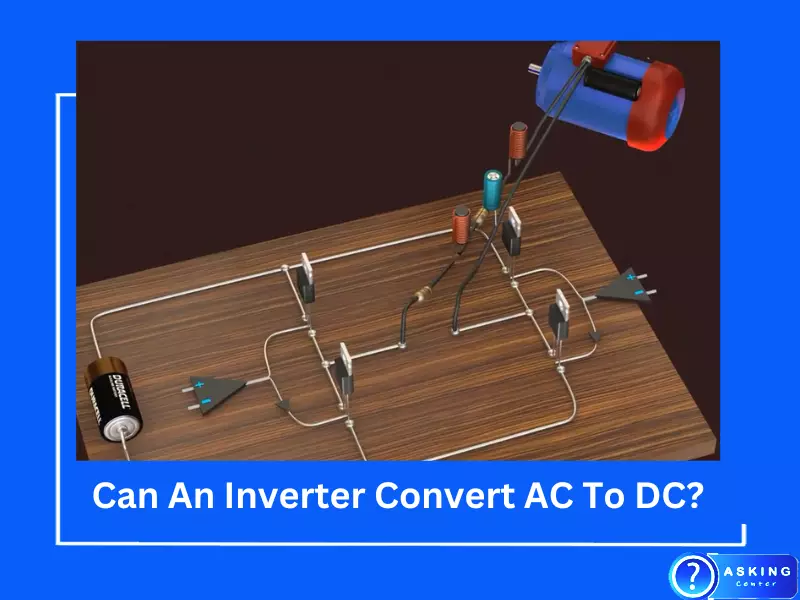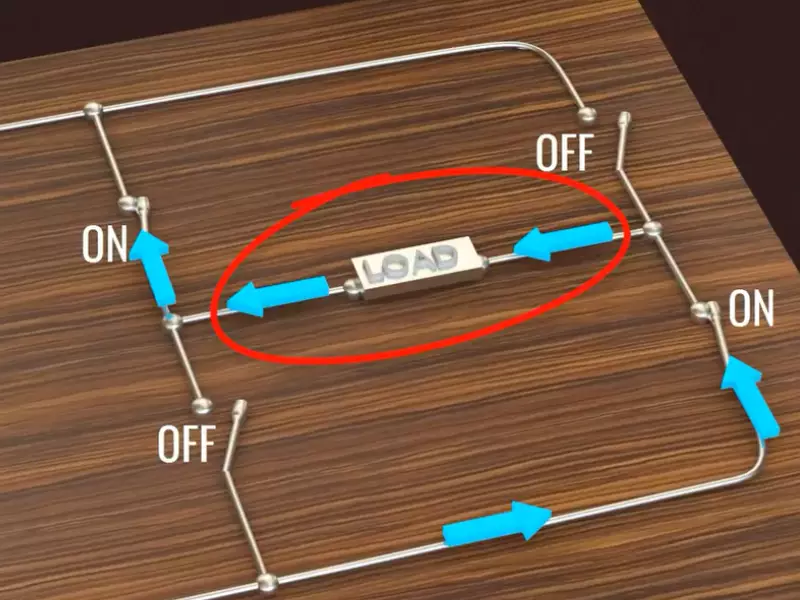Electrical energy, the unseen force that powers our modern world, is available in two distinct forms – Alternating Current (AC) and Direct Current (DC). Their applications are diverse and are fundamental to numerous devices we use every day, from charging our smartphones to running our home appliances. The conversion between these two types of electrical energy is carried out by specific devices, amongst which inverters play a vital role.
Yes, an inverter can convert AC to DC. However, this is not its primary function. Inverters are primarily designed to convert DC to AC, which is a requirement for many domestic and industrial appliances. This conversion capability allows the use of power from sources like batteries, which generate DC power, to be used in AC applications.
Delving further into this topic will unveil the fascinating world of electrical energy conversion. From the intricacies of inverters to the role they play in a UPS system, our exploration will traverse a spectrum of essential information that broadens our understanding of this subject. Journey with us as we shed light on the operational capabilities of inverters and their role in our daily lives.
What Is an Inverter?
An inverter is an electronic device that converts Direct Current (DC) to Alternating Current (AC). In its simplest form, an inverter takes DC power from a source like a battery or solar panel and transforms it into AC power. This function is vital because many appliances and equipment in homes, offices, and industries operate on AC power.

The operation of an inverter relies on the principles of electrical engineering and semiconductor technology. At the core of the device are electronic components called transistors, which switch on and off rapidly. This rapid switching action changes the direction of the current, essentially creating an alternating current.
Inverter: Converting DC to AC
The DC to AC conversion process in an inverter is a fascinating blend of technology and engineering. The DC power is supplied to the inverter’s input, where it is then processed by the internal circuitry. The transistors within the inverter switch on and off in a pattern that creates an alternating waveform, typically a sine wave or a modified sine wave.
Inverters find applications in a wide array of fields. For instance, in a solar power system, the DC power generated by the solar panels is converted by the inverter into AC power, which can then be used to run household appliances or supplied to the power grid.
The efficiency of the DC to AC conversion process is crucial. Advanced inverters come with features such as Maximum Power Point Tracking (MPPT) and other control mechanisms to ensure the conversion is as efficient and reliable as possible.

Can an Inverter Convert AC to DC?
As stated earlier, an inverter’s main role is to convert DC to AC. However, some inverters are designed to perform the reverse operation – converting AC to DC. This function is not as common and is typically seen in devices that combine an inverter and a rectifier, such as an Uninterrupted Power Supply (UPS).
To understand why an inverter alone cannot efficiently convert AC to DC, it’s crucial to understand the difference between the functions of an inverter and a rectifier. An inverter is designed to change the direction of current flow multiple times per second, creating an alternating current. On the other hand, a rectifier is designed to make current flow only in one direction, creating a direct current.
An Inverter’s Role in a UPS System
A UPS, or Uninterrupted Power Supply, is a device that provides a continuous supply of power to connected devices, even during power outages. It does so by storing energy in a battery (DC power) and then using an inverter to convert this stored DC power into AC power as needed.
A key component of a UPS system is the combination of an inverter and a rectifier. The rectifier’s role in the UPS is to convert the AC power from the mains supply into DC power, which can then be stored in the battery. The inverter, on the other hand, takes the stored DC power and converts it back to AC power when required. Thus, the inverter and rectifier work together to ensure a continuous power supply.
Understanding Rectifiers: Converting AC to DC
A rectifier is an electrical device that converts alternating current (AC) to direct current (DC). This conversion is achieved by allowing the current to flow in one direction only, effectively “rectifying” the alternating current into a direct one.
The process of converting AC to DC involves several steps. The AC input to the rectifier is a sine wave, with the current alternating in direction. The rectifier then filters this sine wave, allowing only the positive (or negative) halves of the cycle through, thereby producing a DC output.
The combination of an inverter and a rectifier in a UPS system illustrates the complementary roles these devices play. While the inverter converts the battery’s DC power to AC power for use during power outages, the rectifier converts the AC power from the mains supply to DC power for charging the battery.
FAQs
Can an inverter run on AC power?
In a standard configuration, an inverter cannot run on AC power. It is designed to run on DC power and convert it to AC. However, in a device such as a UPS, a rectifier is used to convert AC power into DC power, which can then be used by the inverter.
Do all UPS systems contain an inverter and a rectifier?
Yes, all UPS systems contain both an inverter and a rectifier. The rectifier converts the incoming AC power to DC for charging the battery, while the inverter converts the battery’s DC power to AC for powering the connected devices.
Can an inverter be used as a rectifier?
While an inverter and a rectifier perform opposite functions (one converts DC to AC, the other AC to DC), they cannot typically be used interchangeably. However, some devices combine both functions, such as a UPS or a power supply unit in a computer.
Conclusion
The discussion highlights the versatility and importance of inverters in our everyday life, especially their integral role in UPS systems. Although they are primarily designed for converting DC to AC, in combination with a rectifier, they contribute to the efficient functioning of a UPS by enabling AC to DC conversion.
This exploration should enhance your comprehension of the fascinating dynamics of electrical energy conversion and its implications in real-world applications. Remember, the marvel of modern technology lies in understanding its nuances and harnessing its potential to its fullest.
